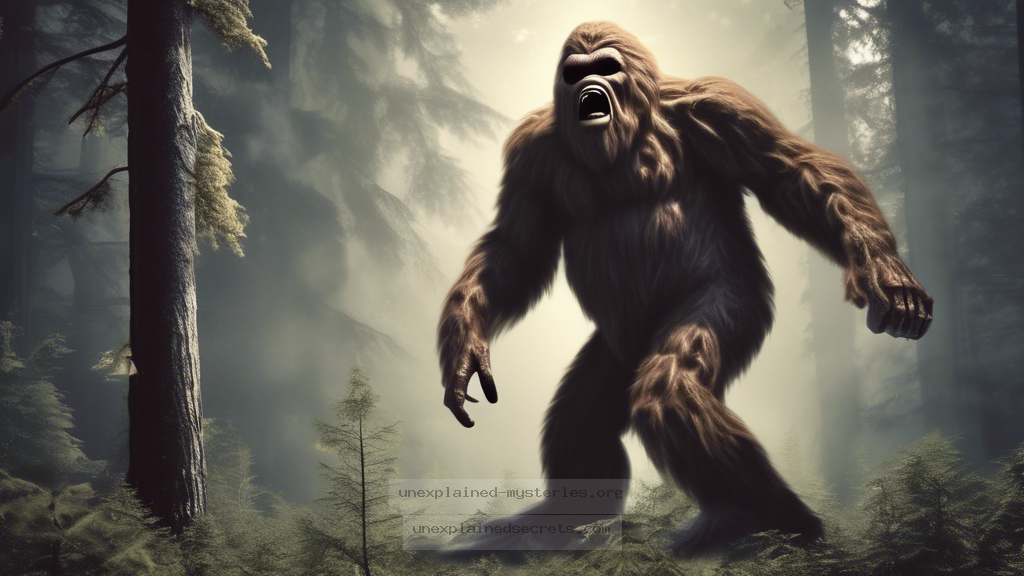What Are the Most Compelling Pieces of Evidence Supporting Bigfoot’s Existence?
What Are the Most Compelling Pieces of Evidence Supporting Bigfoot’s Existence?
The quest for the truth behind Bigfoot, one of the most famous cryptids in modern folklore, has captured the imaginations of countless individuals over the decades. As sightings and encounters continue to emerge, the question remains: what are the most compelling pieces of evidence that support the existence of this elusive creature? This inquiry is significant not only for enthusiasts of the paranormal but also for those interested in the intersection of folklore, biology, and anthropology. In this blog post, we will delve into various pieces of evidence, including historical accounts, physical artifacts, and modern investigations, to understand the ongoing fascination with Bigfoot and assess the validity of claims surrounding its existence.
Historical Context of Bigfoot Encounters
The legend of Bigfoot, or Sasquatch, is deeply rooted in the folklore of Indigenous peoples across North America, particularly in the Pacific Northwest. These tribes have long spoken of large, hairy beings that inhabit the forests. The term “Sasquatch” itself is derived from the Salish word “sásq’ets,” which refers to a giant wild man. Historical accounts date back to the 1800s when early settlers reported large footprints and strange howling sounds in the wilderness. This context is crucial to understanding how Bigfoot became an enduring figure in American culture.
One of the earliest documented sightings was reported by a group of miners in California during the Gold Rush of 1847. They described encountering a large, ape-like creature that fled into the woods. This account, among others, helped to lay the groundwork for the modern Bigfoot phenomenon, especially as more individuals began to share their own encounters throughout the 20th century.
Physical Evidence: Footprints and Hair Samples
One of the most compelling pieces of evidence for Bigfoot’s existence is the numerous reported sightings of large footprints. The first widely publicized footprint was cast in 1958 by Jerry Crew in Bluff Creek, California. This cast, measuring 16.5 inches long, is still one of the most famous pieces of evidence associated with Bigfoot. Investigative teams have analyzed similar footprints over the years, with some claiming they exhibit unique features, such as dermal ridges, which are not typically found in human footprints.
In addition to footprints, hair samples have also been collected and analyzed. In 2012, a team of researchers led by Dr. Melba Ketchum released a study claiming to have sequenced DNA from various hair samples attributed to Bigfoot. The study suggested that these samples belonged to an unknown primate species, but it faced criticism from the scientific community for lack of peer review and methodological flaws. Despite this, it reignited interest in the possibility that Bigfoot might be a hybrid species of human and ape.
Eyewitness Accounts: Credibility and Patterns
Eyewitness accounts play a crucial role in the ongoing debate about Bigfoot’s existence. Many individuals who report sightings describe similar physical characteristics: a large, bipedal figure covered in hair, often peering from behind trees or rocks. Some reports detail the creature’s distinct odor and guttural vocalizations. These accounts, while anecdotal, are often compelling due to the consistency in the descriptions given by witnesses.
Notable sightings include the 1967 Patterson-Gimlin film, which purportedly captures Bigfoot walking through the woods in Northern California. Despite extensive analysis, the film’s authenticity remains contested. Supporters argue that the creature’s gait and movements cannot be replicated by a human in a costume, while skeptics claim it could easily be a hoax. The Patterson-Gimlin film is a significant piece of evidence that continues to fuel debates about the creature’s existence.
Modern Investigations: Technology and Methodology
Advancements in technology have opened new avenues for investigating Bigfoot. Researchers now utilize thermal imaging cameras, night vision devices, and audio recording equipment to capture evidence in the field. These tools allow investigators to gather data during expeditions in remote areas known for frequent sightings.
For example, the Bigfoot Research Organization (BFRO) employs a methodology that includes documenting sightings, collecting physical evidence, and conducting interviews with witnesses. Their approach emphasizes scientific rigor, aiming to separate credible reports from hoaxes or misidentifications. The use of digital media has also enabled amateur investigators to share findings, fostering a community dedicated to exploring the phenomenon.
Alternative Explanations: Misidentifications and Hoaxes
While many enthusiasts firmly believe in Bigfoot’s existence, skeptics argue that most evidence can be explained through misidentification or outright hoaxes. Large bears, for instance, can be mistaken for Bigfoot, especially when observed from a distance. Additionally, the phenomenon of pareidolia—where the mind perceives familiar patterns in random stimuli—can lead individuals to see shapes or figures that may not exist.
Hoaxes have also plagued the Bigfoot narrative. Several infamous hoaxes have been exposed over the years, including the 2008 “Bigfoot body” hoax, where two men claimed to have found a dead Bigfoot in Georgia. Such incidents contribute to skepticism, leading some researchers to urge caution when accepting evidence without thorough investigation.
Common Misconceptions: The Nature of Bigfoot
One common misconception is that Bigfoot is merely a myth or a product of folklore, with no basis in reality. While many believe the stories are exaggerated or fabricated, the prevalence of sightings and the consistency of reports suggest that there may be more to the legend than mere imagination. Additionally, some people assume that Bigfoot must be a large, hairy ape-like creature, but others theorize that it could be a new species of hominid or a surviving species of ancient primate.
Another misconception is that all evidence is either conclusive or completely dismissed. In reality, the evidence surrounding Bigfoot is often ambiguous, leading to differing interpretations. While some may view footprints or hair samples as definitive proof, others see them as inconclusive or explainable by other means. This variance in interpretation is pivotal in the ongoing study of Bigfoot.
Best Practices for Investigating Bigfoot
If you are interested in investigating Bigfoot, following established best practices can enhance your research and lend credibility to your findings. First, familiarize yourself with the history and literature surrounding the subject. Understanding previous studies, sightings, and hoaxes can provide context for your investigation.
Second, when collecting physical evidence, ensure proper documentation. Take detailed notes, photographs, and measurements. Using GPS technology can help record the precise location of evidence, which is crucial for future reference. Additionally, consider collaborating with experienced researchers or joining a local Bigfoot investigation group to share knowledge and resources.
Future Developments: Ongoing Research and Exploration
As interest in Bigfoot continues to grow, new research methodologies and technologies may emerge. Genetic testing, drone surveillance, and advanced biomechanical analysis could provide fresh insights into the possibility of Bigfoot’s existence. Furthermore, the increasing acceptance of interdisciplinary approaches—combining anthropology, biology, and folklore studies—may yield new perspectives on this enigmatic creature.
Organizations like the BFRO and other local research groups are continually gathering data, conducting expeditions, and analyzing evidence. Future developments may also include collaboration with universities, which could introduce more rigorous scientific inquiry into the field of cryptozoology.
Conclusion: The Enduring Mystery of Bigfoot
The question of Bigfoot’s existence remains one of the most compelling mysteries in the world of cryptozoology. From historical accounts and physical evidence to modern investigations and alternative explanations, the phenomenon continues to captivate the public imagination. While skepticism persists, the consistent reports and intriguing pieces of evidence suggest that there may be more to this mystery than meets the eye. As technology advances and research continues, the quest for answers surrounding Bigfoot will likely endure, inviting both believers and skeptics to explore the unknown.
Other Articles
Recent Posts
- What Happened to Flight MH370? The Conspiracy Theories That Still Haunt Us
- What Secrets Lurk Within the Walls of the Infamous Trans-Allegheny Lunatic Asylum?
- What Evidence Supports the Existence of Bigfoot in the Pacific Northwest?
- What Happened to the Indus Valley Civilization? Unraveling the Mysteries of Ancient Urban Life
- Can Telepathy Be Scientifically Proven Through Laboratory Evidence?







